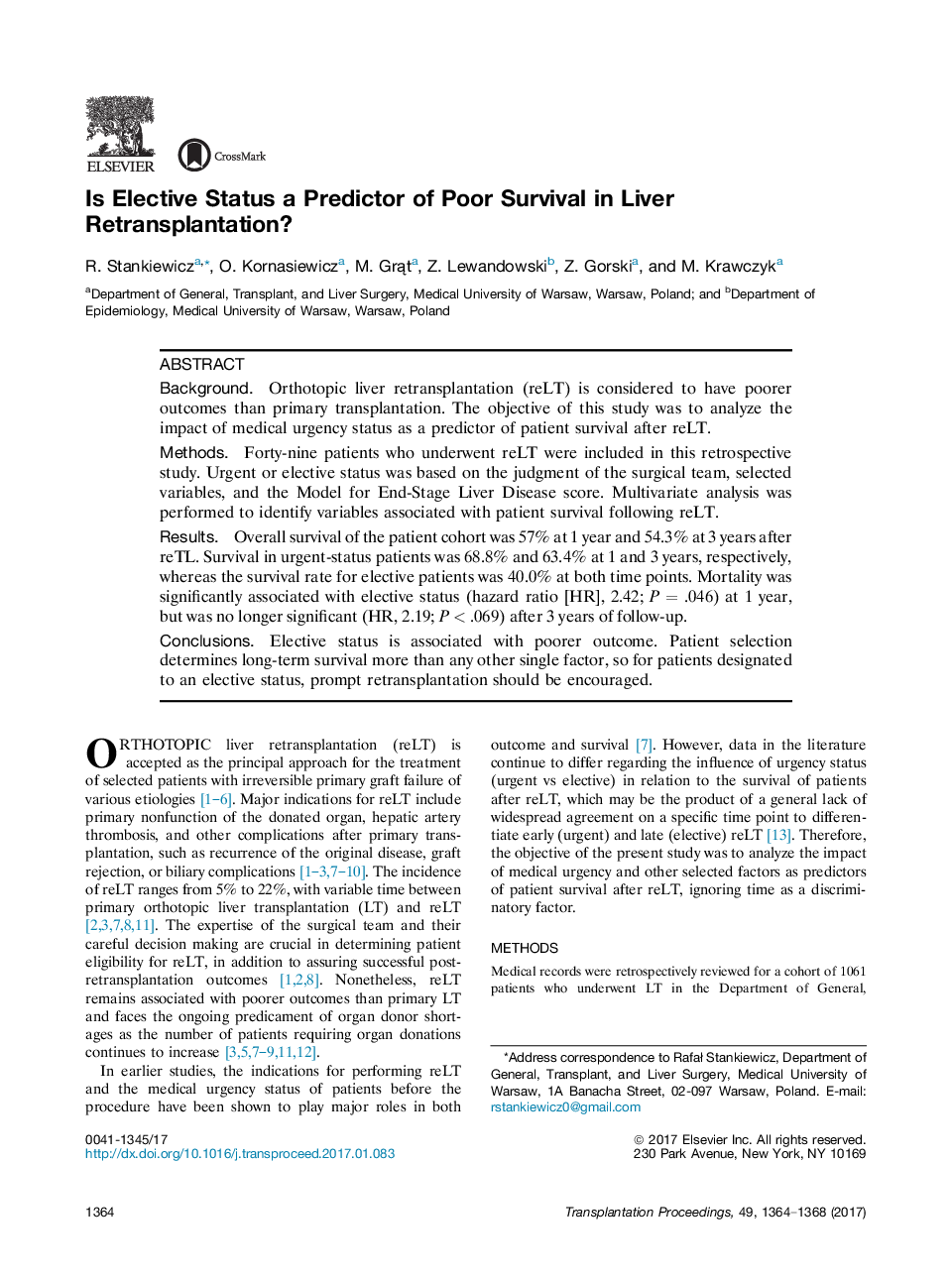| Article ID | Journal | Published Year | Pages | File Type |
|---|---|---|---|---|
| 5728695 | Transplantation Proceedings | 2017 | 5 Pages |
â¢Patients qualified for liver retransplantation are not a homogenous group.â¢Not the time period but the urgency of liver retransplantation seems to be the key factor affecting survival.â¢Elective status is associated with poorer outcome.
BackgroundOrthotopic liver retransplantation (reLT) is considered to have poorer outcomes than primary transplantation. The objective of this study was to analyze the impact of medical urgency status as a predictor of patient survival after reLT.MethodsForty-nine patients who underwent reLT were included in this retrospective study. Urgent or elective status was based on the judgment of the surgical team, selected variables, and the Model for End-Stage Liver Disease score. Multivariate analysis was performed to identify variables associated with patient survival following reLT.ResultsOverall survival of the patient cohort was 57% at 1 year and 54.3% at 3 years after reTL. Survival in urgent-status patients was 68.8% and 63.4% at 1 and 3 years, respectively, whereas the survival rate for elective patients was 40.0% at both time points. Mortality was significantly associated with elective status (hazard ratio [HR], 2.42; PÂ = .046) at 1 year, but was no longer significant (HR, 2.19; PÂ < .069) after 3 years of follow-up.ConclusionsElective status is associated with poorer outcome. Patient selection determines long-term survival more than any other single factor, so for patients designated to an elective status, prompt retransplantation should be encouraged.
